A special experience.
For an alphabetical index of the New England College series of pieces, click here.
My son and I spent mid-May through mid-June touring New England private colleges.
Our map discloses both school destinations (red framed box for the big Ivies, blue for the little Ivies) and Revolutionary War sites (black box). As I do not know New England, I had our travel destinations audited by a friend who lives in Lexington, MA and as the changes below disclose, I had originally placed Dartmouth in Rhode Island rather than in New Hampshire and Concord in NH not in MA!
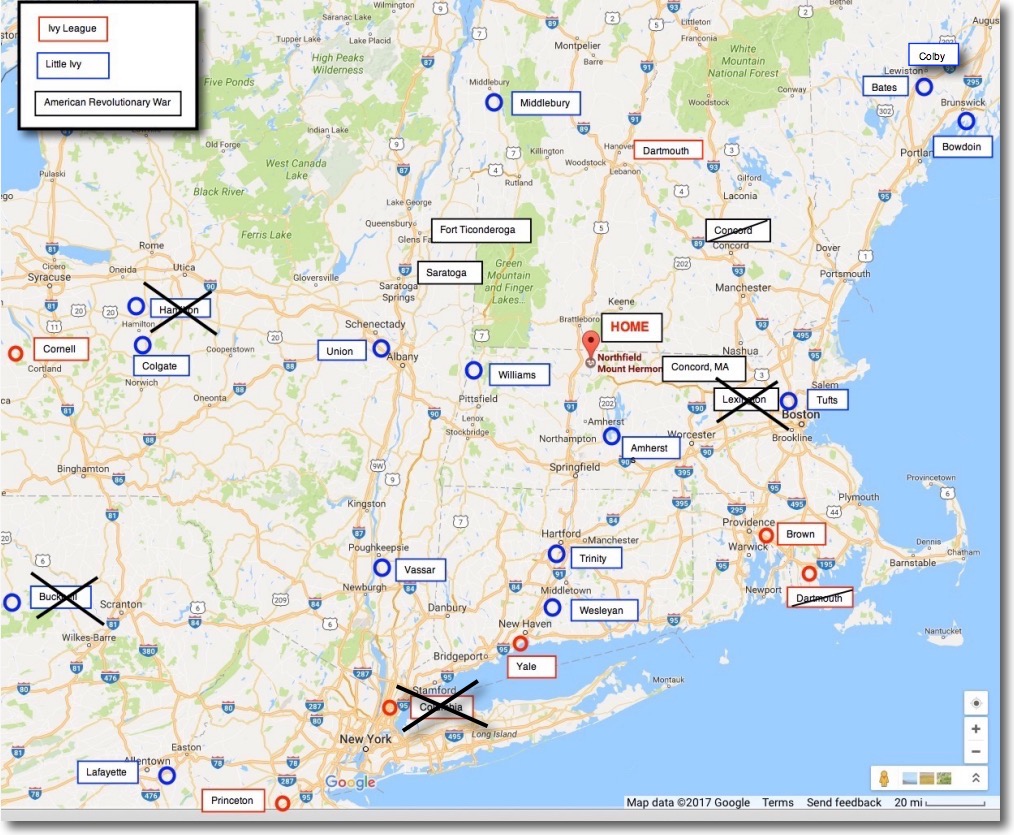
‘Home’ denotes our AirBNB rental in New Hampshire. ‘Northfield Mount Hermon’ is the location of Winston’s prep school.
We had to delete three colleges – Hamilton, Bucknell and Columbia – and one Revolutionary War site – Lexington – for lack of time, but overall our central location in New Hampshire on the Massachusetts border was strategically placed in the center of the action. We will visit these deleted destinations, along with Penn, another time.
On the other hand we were lucky to be able to add a tour of the fabulous mansions in Rhode Island and equally lucky that the truly miserable weather at the start of our trip a month ago cleared up, rendering many of the colleges we visited in their best light. Another wonderful side trip was a visit to Bethlehem, Pennsylvania to the old Bethlehem Steel mill.
Why only New England Ivies and Little Ivies?
My son attends Northfield Mount Hermon prep school in western Massachusetts and not only loves the school, he has also fallen in love with the discreet charms of New England, specifically requesting that we limit our search to schools in the area. Why private schools? Of course there are excellent public schools to be found but we had to filter down the choices to make this a realistic project.
What was the purpose?
This is very early in my son’s education as he will be a sophomore at NMH this fall. We did not for one moment try to compare the schools based on academic standards, for Winston has no idea what he wants to study at this early stage and each school has its strengths and weaknesses. Rather, the intent was to soak up the atmosphere of the colleges we visited and let him decide what appealed to him. So we sort of ambled around, figuratively kicking the tires, and while this sounds like a lackadaisical approach, in the event we found we learned a tremendous amount.
What did we learn?
One experience was shared in every school we visited. The many students, faculty and staff we spoke with were without exception exceptionally enthusiastic about their school, and would go out of their way to help us and show us around. During our visit to Bates, a member of faculty took twenty minutes out of her day to walk us to our desired location, sharing much about the school as she did so. In the case of Dartmouth and Colgate we were given guided tours by students. At Lafayette we enjoyed the only really good self-guided tour booklet of any school. Most of the tour maps were next to useless and the one at Princeton added insult to injury with a typeface so small that not even Winston could make it out! No matter. We simply asked whoever we encountered and made out fine.
Another great experience was that, of the hundreds of buildings we explored, but two were closed. This openness and accessibility is the highest possible tribute to the liberal tradition of New England schooling. Neither of us recalls seeing a security guard at any of the schools we visited.
I have often referred to the great tradition of American philanthropy in this journal, one which so distinguishes the United States from every other nation on earth. Never is that tradition more visible than when visiting America’s premier schools, for every campus, every building, every painting and sculpture, heck, every bench and plant even, reflects an act of philanthropy. From the Rockefellers donating campuses to the Gateses donating buildings to Joe Blow getting his name on the park bench, everything you see around you has been donated. What do you care that some egotist wanted his name on an edifice when the alternative is a piece of dirt?
And if you must know, this is a key distinction between private and public colleges. The gifts to the former are generous and come with no strings. Those to the latter are modest and come with the big hand of government all over them. Which would you prefer?
The highlights which follow are based on my son’s opinions, though these mostly mirror my own. One exception is that I am far more attuned to abstract art than he is, so the related comments tend to be colored in my favor!
Chapels:
Every school we visited has a chapel, each institution having been created with a religious focus, always Protestantism in one of its many guises. And while there was not a bad chapel to be seen, that at Princeton is in a class of its own, excelling in design and the sheer power of its presence. Today, every one of the schools we visited is secular, with a nod to those in need of religion, chapels oft referred to as ‘Interfaith Centers’, whatever that means.
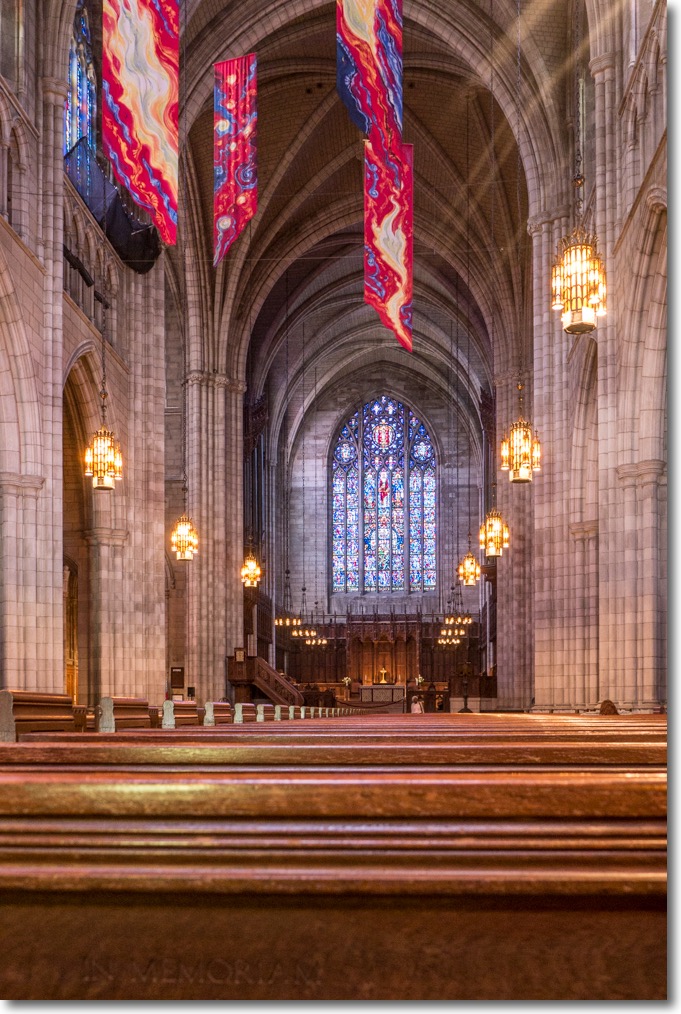
The chapel at Princeton.
Art galleries:
The better endowed schools have world class art collections, and the standouts are Harvard, Williams, Amherst, Yale and Princeton. The five priceless Edward Hoppers at the Yale Art Gallery and the Impressionists at Princeton vie for primacy, with the great taste shown in Bowdoin’s curation being especially noteworthy. Then there is that peerless Giacometti at Cornell ….
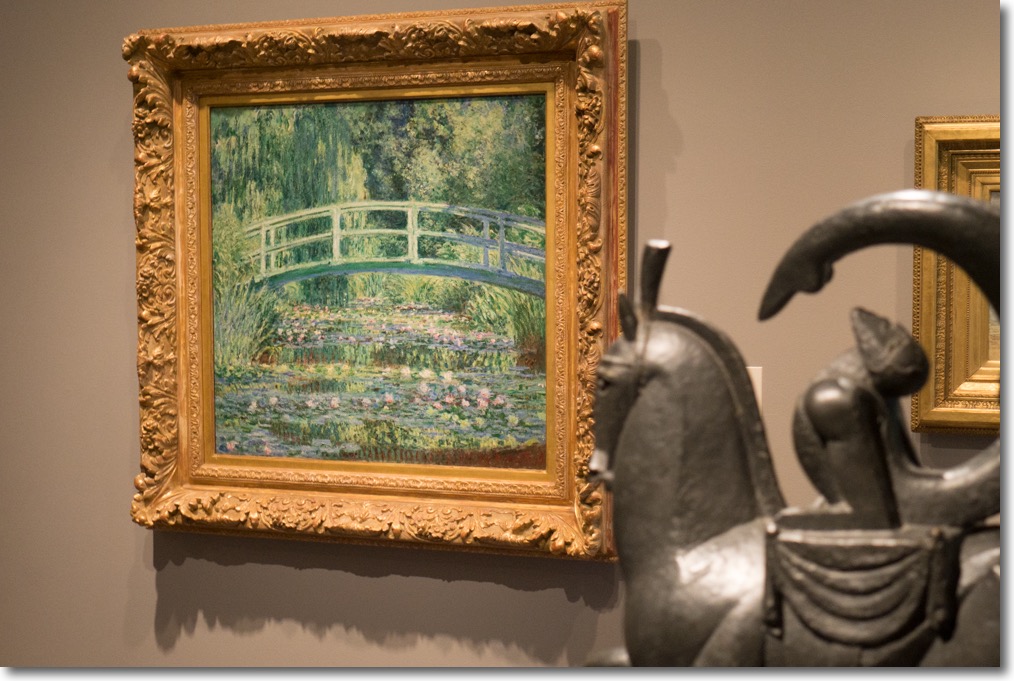
How do you improve on this Monet in Princeton?
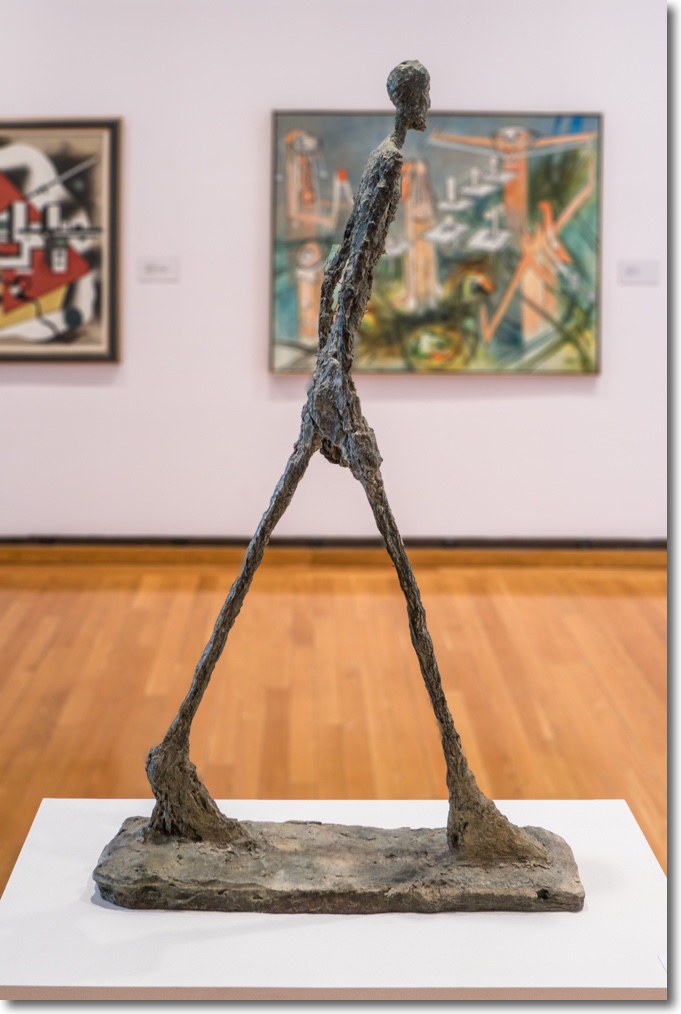
The Giacometti at Cornell.
Is a great art gallery an essential for a great education? Well, if you believe that wealthy alumni donors testify to the quality of the institution, then the answer is a resounding ‘Yes’.
Architecture and layout:
These are vital to the ‘vibe’ of a school. After all, the prospective student will spend four formative years of his life on campus.
If it’s an urban campus one seeks then it is very hard to improve on the highly integrated and unified feel of Union College in Schenectady, Tufts in Boston and Trinity College in Hartford, all of which present a perfect whole to the viewer.
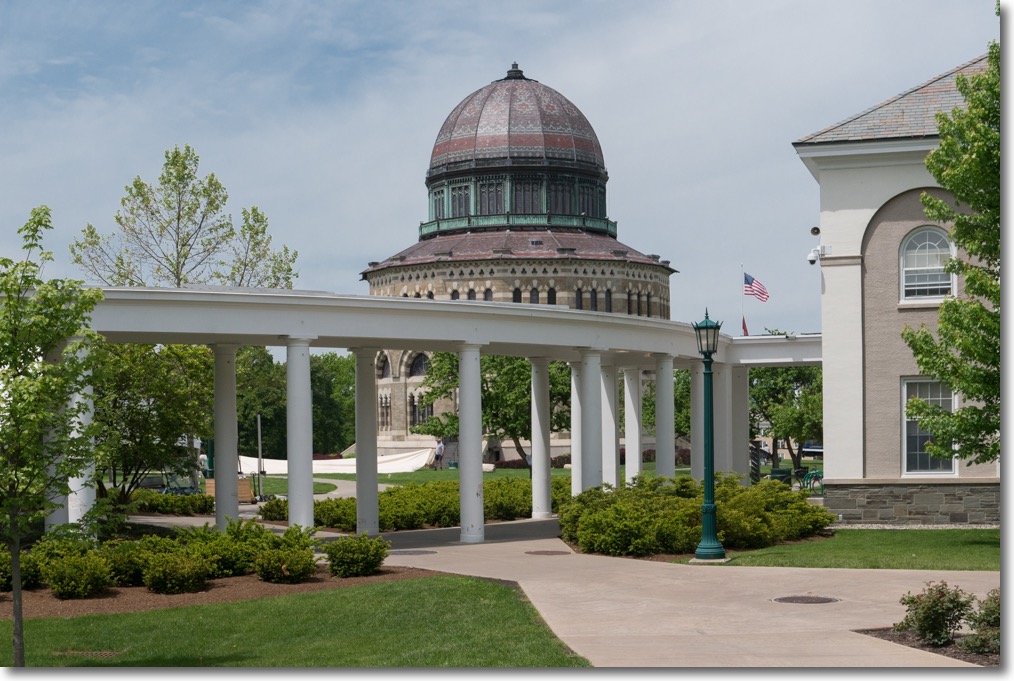
Union College in Schenectady, with the Nott Memorial building in the rear.
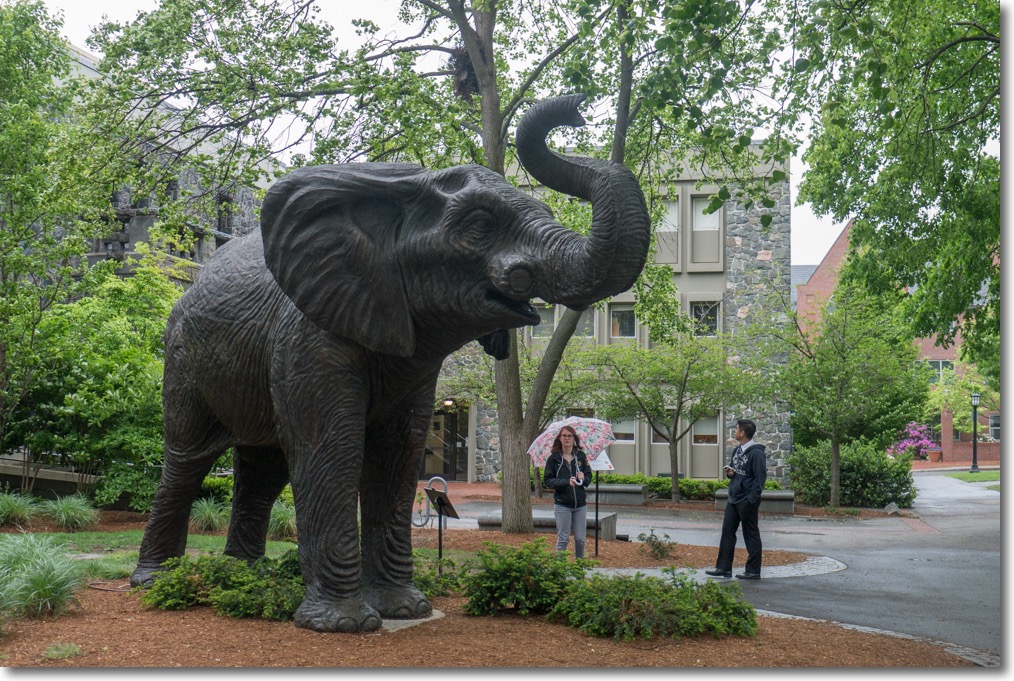
Barnum’s elephant at Tufts.
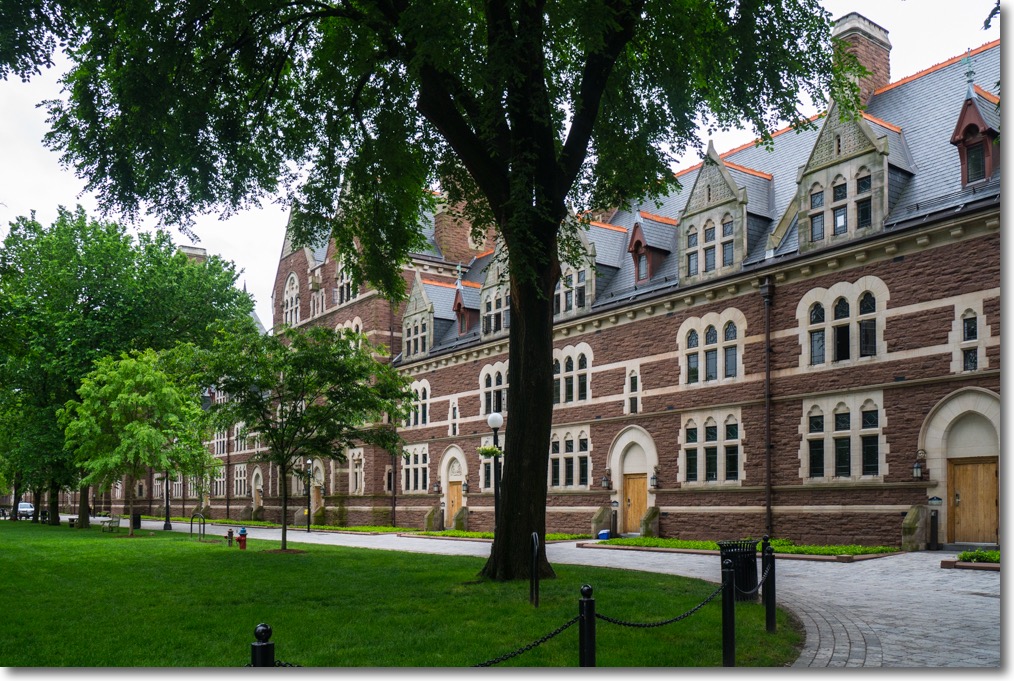
The Long Walk at Trinity College.
The town of Schenectady, NY will clearly make it in its turnaround, gentrification efforts, whereas the part of Hartford, CT adjacent to Trinity College seems patently doomed.
Of the more remote suburban campuses, each of Bates, Middlebury and Colgate excels, the latter especially beautiful.
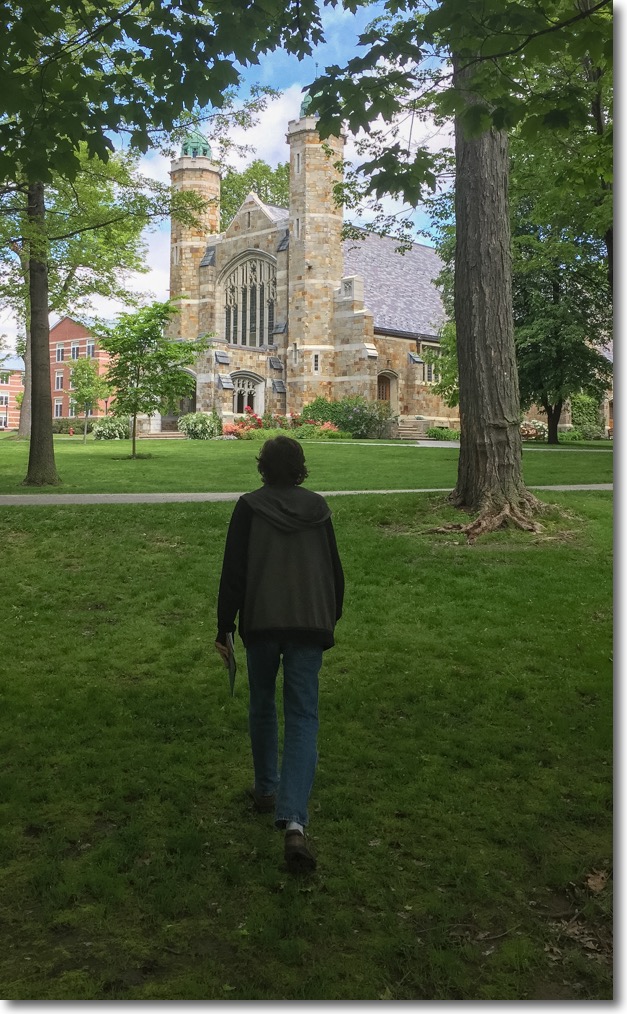
Bates is gorgeous.
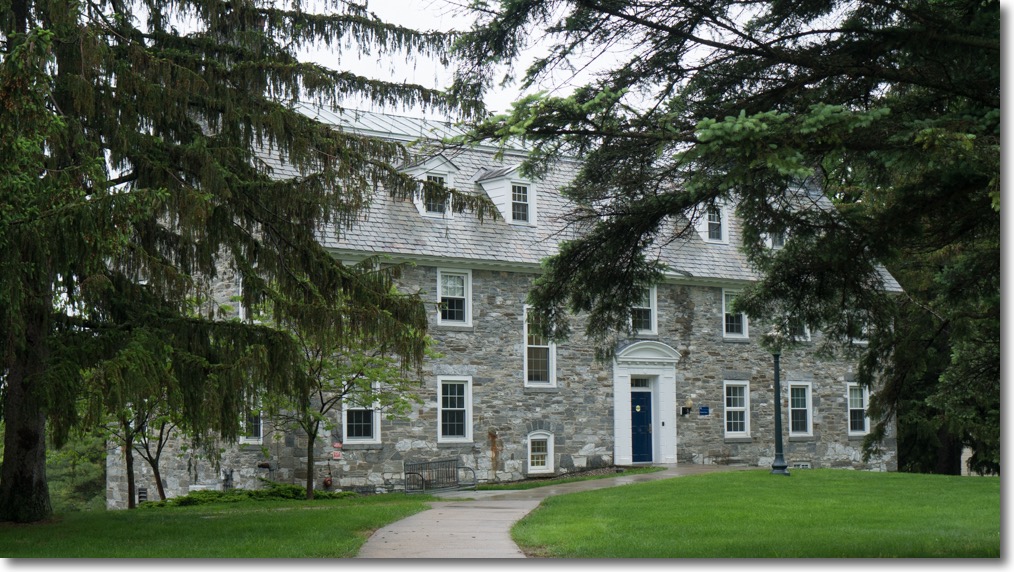
The Meeker House dorm at lovely Middlebury.
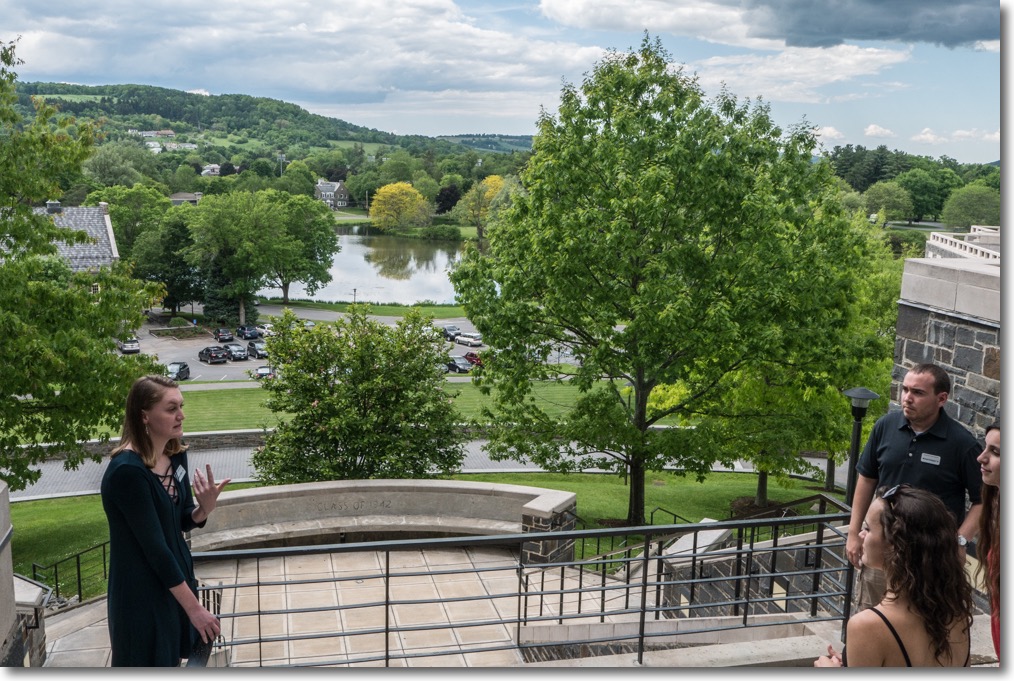
Colgate’s beauty writ large.
Libraries:
What could be more important, even in this digital age? A library is not just a place to read – be it on paper or screen – but it is just as importantly a place of serenity and peace. Based on sheer size, grandeur and depth it would be easy to simply choose Harvard, Yale, Princeton or Dartmouth as having the best library spaces and collections, yet we were quite overwhelmed by the genius of the modern design of the one at Middlebury and its relevance to the modern age. Illustrated manuscripts go only so far, after all, in the age of the microchip.
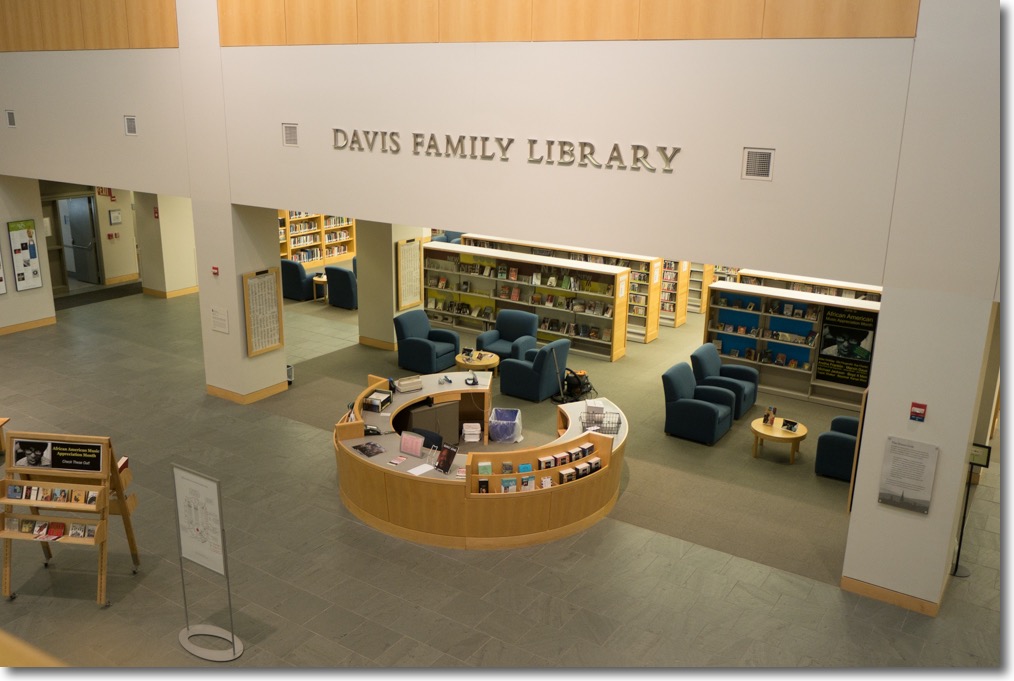
The Davis Family library at Middlebury.
Driving:
Driving in New England is a mixed blessing. We had to take many back roads in our travels and those in New Hampshire, Vermont and Massachusetts frequently resembled nothing so much as dirt tracks, being in execrable condition. By contrast, the roads in upstate New York and in Connecticut were a joy to travel.
In New York we drove fully two thirds of FDR’s wondrous Taconic State Parkway encountering maybe four dozen cars during the hour, along with pristine scenery on a fabulous roadway.
In Connecticut, highway 50 through Greenwich was fast and fun, pervaded by the smell of all that hedge fund money.
Finally, highway 13 from Colgate to Cornell in New York offered a tremendous drive through tight sweepers in semi-woodland with zero traffic.
But for the most part we confirmed that America’s roads – federal and state – are in shocking disrepair, and many was the time we thanked the excellent suspension in our 2017 Cadillac XTS rental car – a full size sedan – for insulating us from the worst depredations visited on the poor vehicle’s chassis time and again.
The pictures:
All images were made using a Panasonic GX7 with the old 14-45mm kit zoom dating back to the early days of the G1. For the dark chapel interiors ISO1600 was generally used, in lieu of ISO400. Even so, the chapel interior images dictated 5 snaps of each subject, with the knowledge that at least one would be sharp enough for publication, even if handheld at 1/5th second!
Lightroom was used for processing and a great many images had the keystone effect in building snaps removed using the rudimentary but effective perspective correction features in Adobe’s application. I use the digital horizon in the Panny to keep the camera level, so only correction of verticals is called for. For the most part the images you are seeing here put those in the colleges’ materials to shame, which is a reflection on the schools not on my technique.
The Panny’s sensor does a poor job of rendering blue skies so an assist from Lightroom was called upon when an apparently wan sky was, in reality, a deep azure. The blue ‘Saturation’ slider was simply moved to the left. Extreme contrast ranges in many of the interior images were corrected with the estimable ‘Highlights’ and ‘Shadows’ sliders in LR, the image always exposed for the highlights as these are next to impossible to recover with postage stamp-sized digital sensors. Finally, the Clarity slider in LR saw much use to make a silk purse out of the sow’s ear which is frequently an MFT sensor’s original RAW image.
The $64,000 (a year) question:
So what was my son’s gut feel for the top three after these first visits?
- Yale
- Wesleyan
- Tufts
Now, if you don’t mind, we deserve a vacation ….
Click here for an index of all the Biographical pieces.